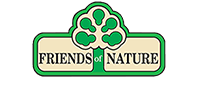Hi Friends! This week we’re going to be talking about the benefits of different bird feeders and the seeds that go with them.
Peanut Feeder
There are two different types of peanuts you can feed, Shelled or Peanut Pieces.
Shelled
Shelled peanuts attract Blue Jays the most, but Red-Bellied Woodpeckers have been known to visit the feeders as well. Some other birds may grab a peanut here and there but the thick shell makes it harder for the smaller birds to crack. One other common visitor to the shelled peanut feeder is the squirrels. The most common shelled peanut feeder is one that is shaped like a wreath. Very easy to fill with a slinky-like metal that wraps around a metal base, making it easy for the birds to grab and go.
Peanut Pieces
Peanut Pieces are a little more common among the birds. More birds are likely to eat them because there is no shell. You will sometimes find them in various mixes, or you can feed them all by themselves. Some of the most common species that make use of the peanut feeder are Chickadees, Titmice, Nuthatches, and Woodpeckers. Deciding on a feeder for these types of peanuts is a little easier as well. There are specific tube feeders that have a special metal type-pattern. They can also be fed in a mixed-seed feeder, trays, and hoppers.
Tube Feeder
Tube feeders are the most common among the birds. They come in various sizes, colors, and seed types. Most tube feeders have small perches for perching birds to eat from. The biggest benefit of feeding out of a tube feeder is to deter bigger birds, such as Jays or Blackbirds. Cardinals are a very common large bird that every birder likes to see. There are specific larger perches for them, usually on a little bigger feeder.
Most tube feeders are for Black Oil Sunflower or some kind of mixed seed. There are also Thistle Tube feeders, Which I will talk a little more about in the next paragraph. Going into the colder months Black Oil and nuts become the most popular seeds because they are higher in necessary fats.
Thistle Feeder
Thistle can be fed in a tube, sock, or screen feeder. We sell a wide variety of all three options. Finches are the most common bird that will eat Thistle, which is high in oil and a good source of energy. Finch mixes also will fit in a thistle feeder. As previously stated, birds look for different seeds in cooler months, but in early spring and later summer they eat mostly millet. Millet helps form strong calcium for their eggshells.
Hopper Tray Feeder
Hopper and Tray Feeders range from all kinds of colors, sizes, shapes, and styles. They are meant as just a general feeder for all types of birds and larger seeds. Thistle or a finch mix is the only seed that should not be put in these feeders, it will blow out in the wind or if it gets wet it will clog your feeder.
Squirrel Proof Feeder
One of the biggest pains when feeding the birds is the squirrels. They are very determined and smart critters. They will figure out and destroy almost all types of feeders, luckily there are a couple of different ways to save your feeders from being emptied in a couple of hours. Safflower is a seed that most squirrels don’t like or won’t eat much of. We have a “Fire Mix” that you can add to your seed. It’s a mix that contains hot pepper spices, mix it with a little oil, and your birdseed and the squirrels will be offended by the taste. They might not even come back! Don’t worry the birds will not be affected, they can’t taste it. If either of these options does not work out for you, there are a couple of different feeders that we’ve heard great things about!
Squirrel Busters are our top sellers. They are easy to fill, easy to clean, and are chew proof. This type of feeder comes in all different sizes and specifies with all the seeds I’ve listed throughout the blog. All of the feeders also come with a lifetime care warranty, just in case your pesty squirrels are extremely determined.
Hopefully, all these facts and information help you with your bird experiences. Don’t forget to join us for our annual Bird Seed Sale running from October 29th – November 2nd. Happy Birding!
Blog Written by Haley Cooper

